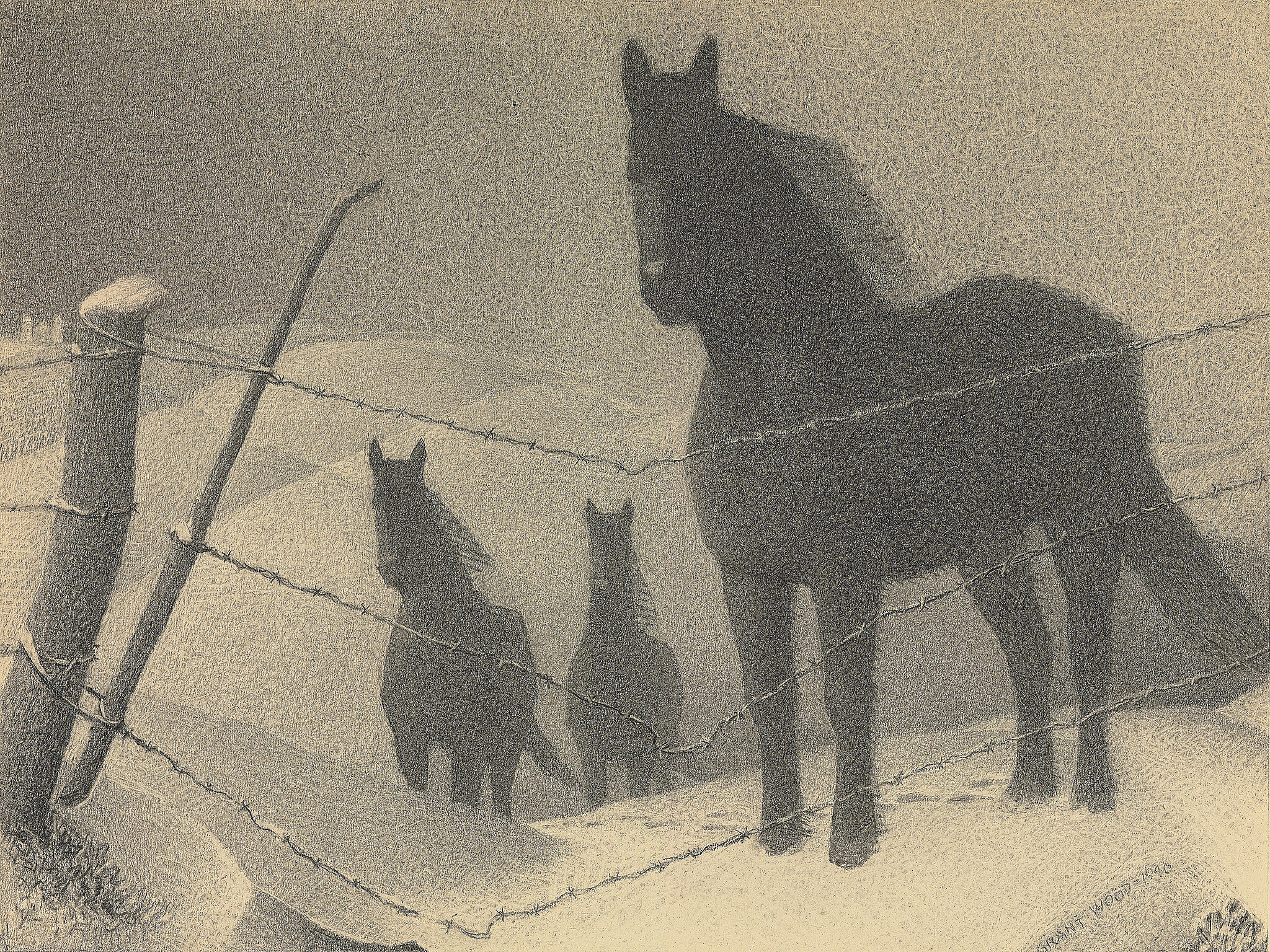Grant Wood: American Gothic and Other Fables | Art & Artists
Mar 2–June 10, 2018
Grant Wood: American Gothic and Other Fables | Art & Artists
Drawings
6
Grant Wood’s working process was methodical. He made full-scale drawings of each of his paintings and lithographs before beginning to execute them in their final medium. In creating his figurative images, he worked from photographs and live models—often his friends. For his landscapes, he utilized a system called the principle of thirds, which called for drawing a grid of nine squares on top of a composition and adjusting the important visual elements so that they fell at the intersection of the grid’s horizontal and vertical lines. In keeping with his desire for precision, he built up the forms in his drawings by layering multiple small strokes, one on top of the other, in a process known as hatching.
Study for February, 1941
Wood intended to make a drawing for every month of the year. He finished four: January, February, March, and July. The forbidding dark shadows and the cold, barren landscapes in the winter scenes corresponded to a period of domestic and professional stress. They also reflect the political situation of a world at war—a duality that mirrors Wood’s belief that “a painter expresses the times as well as himself.”

